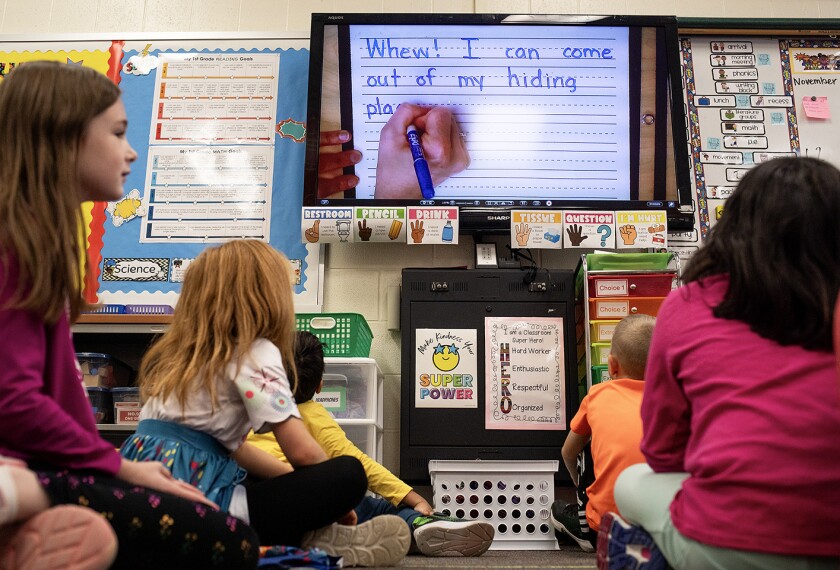Hello. I would like to thank you for thinking of me, the subject matter of the world. It is marvelous that you examine, seek out, discuss, study, learn, use, teach, imagine, and even invent me.
That I am captured and featured in all media forms is amazing. Constructing buildings and classrooms and internet sites, and assembling groups of students led by dedicated teachers just to discuss and learn of me is quite an honor. You also address me in corporate-, union-, and government-training programs. All this is beyond my expectations.
But there is something I must tell all educators and education leaders. You have been hurting my feelings for a very long time. You think of me as just a static and serial collection of facts and ideas to be memorized. That is not the real me.

For more than 50 years, you have tried to reform schools and schooling by addressing issues of organization, management, finance, access, standards, and assessment. But these efforts have often overlooked the essence of teaching practice and student learning: critical thinking, reading, and writing directed at me—the subject matter.
Until you recognize and act on the real me, your reform efforts will continue to be of little value when it comes to significantly improving teacher preparation, practice, and student achievement.
Let me explain.
I know that when it comes to engaging me for the first time or revisiting me, you and your students’ minds can only work in sequence. All thinking, reading, and writing, is serial by nature. You read and write each word in a sentence serially, one after another. This extends to paragraphs and larger tracts of text—all engaged serially. This is how you perceive me. You do so in traditional and digital textbooks, software applications, teacher preparation, professional development, and in classrooms at all levels.
Here is the problem with such conventional practice: It is based on “serialism,” or the practice of treating all my facts and ideas at the same one-dimensional level. This deadens your critically disposed mind. As the basis for rote instruction, this approach does not support critical reasoning. It provides no mental basis for making critical connections within and among my topics’ facts and ideas. Therefore, all students, including teacher-candidates, are induced to learn me by rote. Rote instruction denies students the opportunity to develop literacy skills. Such instruction is like a river that never finds the sea. In your fast-moving complex and digital world, there may be a place for rote instruction, but it can no longer be the primary means of engaging with me.
Teachers need the opportunity to explain me in ways that develop language arts abilities, including the first language art: thinking. For this, you need to move to critical instruction, which is based on your innate “grammar of the mind.” Applying this mind grammar to your teaching will enable your students to gain comprehension of me while concurrently thinking, reading, and writing critically. When you explain how each topic is connected and integrated, you practice critical instruction and your students practice critical learning.
As a human being, you already possess the ability to reason critically."
Serialism is not the only way to look at me. I am like a Chinese lantern. Turned off, you see one thing: a crystallized collection of facts and ideas. Turned on, something entirely different is revealed: the ability to think, read, and write of me critically when you identify, connect, and integrate the facts and ideas within my topics’ intent, activities, and consequences.
For that, you need a critical reasoning strategy to reveal the true, dynamic me. Students will not have to first “study me for background” before they can begin to think of me critically. The reasoning process itself will lead you to understand, comprehend, and explain me critically. That same process will also lead you and your students to read and write of me critically.
Now here is something you will be happy to know. As a human being, you already possess the ability to reason critically. You were born with it. It is time for you to open that gift and use it in teacher-preparation programs, professional-development efforts, classrooms, and instructional materials.
Your conscious mind has its own innate, informal grammar for thinking critically. This grammar of the mind always seeks intent, identifies the activities needed to achieve intent, and, when thinking fully, considers the consequences that follow. You use this critical pattern repeatedly throughout the day. You cannot escape it.
Your mind is responsible for bringing me to life intellectually. Therefore, it should not surprise you that I reflect your grammar of mind and that all my topics mirror the same three elements of intent, activities, and consequences.
Your grammar of mind needs to be explicit, formal, transparent, and shared. This will make it possible to explain and comprehend me. When this need is recognized and acted upon—by teacher-educators, teacher-candidates, education school and faculty deans, college faculty, researchers, K-12 teachers, principals, assistant principals, superintendents, professional developers, and authors of educational materials—you will no longer be at a self-imposed and long-standing disadvantage. This is also a concern for policymakers and all those who assess, certify, accredit, and write standards.
You can transition from rote instruction to critical instruction by teaching like the mind learns. I hope you turn on the lantern and use your gift to see me critically when you think, read, listen, write, speak, and observe the world and its subject matter.




